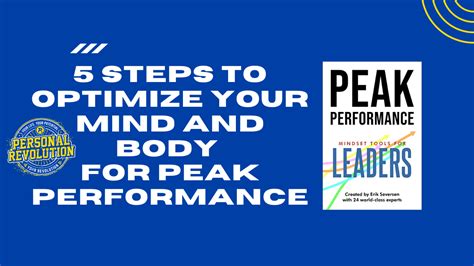Efficiently build functional strength for peak male performance?

In the pursuit of peak male performance, the focus often shifts to raw strength or aesthetics. However, true, enduring capability stems from functional strength—the ability to perform daily activities, athletic feats, and maintain a robust, injury-resistant body. This isn’t just about lifting heavy weights; it’s about moving effectively, efficiently, and powerfully in all planes of motion. For men looking to optimize their physical prowess, enhance longevity, and feel strong in every aspect of life, functional strength training is the ultimate strategy.
What is Functional Strength and Why Does It Matter for Men?
Functional strength refers to training your body to handle real-world demands, replicating movements you perform in life, sports, and work. Instead of isolating muscles, it emphasizes compound movements that engage multiple muscle groups and joints simultaneously. For men, this translates directly into improved athletic performance—whether on the field, in the gym, or even chasing children—reduced risk of injury, better posture, enhanced balance, and a greater sense of physical confidence and capability.

Unlike traditional bodybuilding, which often targets individual muscles for hypertrophy, functional training builds strength that directly contributes to how well you move. It fosters stability, coordination, and power, which are foundational for a resilient body capable of tackling any challenge life throws its way.
Key Principles of Efficient Functional Strength Training
To efficiently build functional strength, your training must adhere to several core principles:
- Compound Movements: Prioritize exercises like squats, deadlifts, presses, and rows. These mimic natural human movement patterns and work multiple joints and muscle groups synergistically.
- Multi-Planar Training: Life doesn’t happen in a straight line. Incorporate movements that challenge you in the sagittal (forward/backward), frontal (side-to-side), and transverse (rotational) planes to build comprehensive strength and stability.
- Core Stability: A strong, stable core is the nexus of all movement. Integrate exercises that challenge your core dynamically, not just crunches, but planks, farmer’s carries, and anti-rotation movements.
- Progressive Overload: To get stronger, you must consistently challenge your body more than it’s accustomed to. This could mean increasing weight, reps, sets, reducing rest, or improving exercise form.
- Movement Quality Over Quantity: Focus on perfect form. Performing exercises correctly ensures maximal muscle activation, minimizes injury risk, and builds true functional power.
Top Exercises for Functional Strength
Incorporating these movements will form the backbone of your functional strength program:

- Squats (Goblet, Front, Back): Fundamental for lower body strength, core stability, and hip mobility.
- Deadlifts (Conventional, Sumo, Romanian): The ultimate full-body strength builder, promoting posterior chain development and core power.
- Overhead Press (Barbell, Dumbbell, Kettlebell): Develops shoulder strength, stability, and upper body power.
- Rows (Barbell, Dumbbell, Cable): Essential for back strength, posture, and balancing pushing movements.
- Lunges (Forward, Reverse, Lateral): Improve unilateral leg strength, balance, and hip mobility across different planes.
- Push-ups and Dips: Excellent bodyweight exercises for chest, triceps, and shoulder strength.
- Farmer’s Walks: A simple yet incredibly effective full-body exercise for grip strength, core stability, and conditioning.
- Turkish Get-ups: A complex, full-body exercise that builds immense core stability, mobility, and coordination.
Integrating Functional Training into Your Routine
Structure your workouts for maximum efficiency and results:
- Dynamic Warm-up: Begin with 5-10 minutes of dynamic stretches (leg swings, arm circles, cat-cow) to prepare your body for movement.
- Workout Structure: Consider full-body workouts 2-4 times a week, focusing on 1-2 compound lifts per session followed by assistance exercises. Alternatively, an upper/lower split incorporating functional movements can also be effective.
- Program Design: Aim for 3-5 sets of 5-12 repetitions for most strength exercises, adjusting based on your goals (strength, endurance, hypertrophy).
- Cool-down: Finish with 5-10 minutes of static stretching, holding each stretch for 20-30 seconds to improve flexibility and aid recovery.

Beyond the Gym: Lifestyle Factors for Peak Performance
Your performance isn’t just built in the gym; it’s sculpted by your daily habits:
- Nutrition: Fuel your body with whole, unprocessed foods. Prioritize lean proteins for muscle repair and growth, complex carbohydrates for energy, and healthy fats for hormonal balance.
- Sleep: Aim for 7-9 hours of quality sleep per night. This is when your body repairs, recovers, and adapts to training stress.
- Stress Management: Chronic stress elevates cortisol, hindering recovery and performance. Incorporate stress-reducing activities like meditation, yoga, or spending time in nature.
- Hydration: Drink plenty of water throughout the day to support metabolic functions, joint lubrication, and overall energy levels.

By optimizing these lifestyle pillars, you create the optimal environment for your body to not only build functional strength but also to perform at its absolute peak, day in and day out.
Conclusion
Building functional strength is a transformative journey for any man seeking peak physical performance and lasting well-being. By prioritizing compound movements, multi-planar training, core stability, and consistent progressive overload, you develop a body that is not just strong, but truly capable. Combine this smart training with optimal nutrition, sufficient sleep, and effective stress management, and you unlock a level of physical and mental resilience that empowers you to conquer any challenge. Embrace the principles of functional strength, and watch your performance—and your life—reach new heights.









